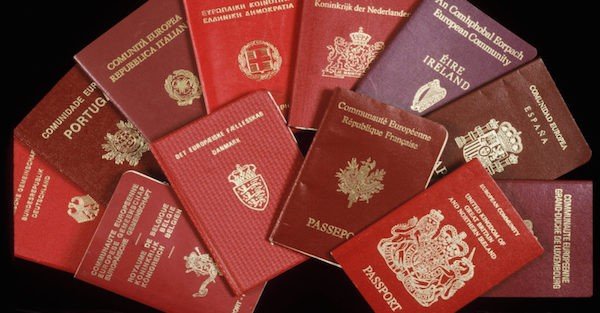For the remainder of this week and through the weekend, I’m in Trakai, Lithuania – just outside the capital of Vilnius – for our 9th annual Blacksmith Liberty & Entrepreneurship Camp.
Each summer, I host 60+ students from around the world in this picturesque setting.
But these aren’t your normal “students.” These are entrepreneurs.
Some have already started businesses and are seeking the next step in their professional development. Others are still in the early stages of exploring different business ideas.
Regardless of where our students fall on the spectrum, this experience is a valuable experience that they won’t get anywhere else. These four days are far from a traditional Entrepreneurship (Theory) 101 college course.
Instead, it’s an immersive experience that teaches practical business skills (i.e. how to start a business, how to execute a business plan, how to raise funds and wisely invest capital, etc.). My goal this year is to deliver an executive-MBA-style education in the four days we have.
And the instructors aren’t college professors who have never left the classroom, but some of my friends and colleagues who’ve built incredibly successful businesses.
This year, we have students from USA, Brazil, Australia, Mali, Colombia, Netherlands etc.
For some students, getting here to Lithuania was simple: 1) Buy a ticket and 2) Get on a plane.
Others had to endure the bureaucratic pain and wait time to obtain a travel visa… based solely on the fact that their home country doesn’t play nice with Lithuania.
It’s amazing that our birthplace has so much impact on our lives.
But fortunately, your birth country doesn’t have to forever dictate the terms. A little planning and action can expand your options for living, conducting business, investing and travel.
I’m talking about a second passport.
Already this week, I’ve highlighted how to get a Brazilian passport and how to get a Uruguayan passport. These are citizenship by naturalization paths, which means after spending time in the country, you’re eligible for a second passport. You can also get a nearly free second passport if you have Irish or Italian ancestors. Or you can invest in – or donate to – a country like St. Kitts in exchange for a passport.
Today, I want to discuss the quality of passports in general.
You may have seen some of these traditional passport rankings published by immigration attorneys and businesses offering related services. They typically just count each passport’s number of visa-free countries it allows to produce their ranking.
The analysis stops there.
This traditional method is flawed – it doesn’t account for the “quality” of the accessible countries.
For example, let’s imagine that passport A gives visa-free access to just two countries in the world – France and China. And passport B also provides access to only two countries – Tuvalu and Comoros.
If you assess the quality of both passports the traditional way – by counting the number of countries – then both passports equally provide visa-free access to two nations.
But clearly, the passport A holder is getting more value. I would certainly rather have visa-free access to France and China than Comoros and Tuvalu.
So, to fix this shortcoming in passport rankings, my team came up with a solution.
We assigned each country an “attractiveness” score, based on: 1) Its number of international arrivals (i.e. the world’s collective attractiveness “vote”) and 2) Its Gross Domestic Product.
In terms of “attractiveness”, the US placed first. China and France were second and third, respectively. And in case you’re wondering, Comoros placed near the bottom… and Tuvalu was dead last.
Then, using each country’s attractiveness score, we referenced each passport’s number of visa-free countries it allows. The sum for each country produced a ranking of 193 passports.
Even though the US was the most “attractive” country according to our data, it didn’t take the top passport spot. In fact, the US passport didn’t crack the top 25… while a European microstate placed third and a South American country was sixth.
Discover how your country’s passport ranks here.
(You’ll also see each passport’s access to the world’s GDP, surface area, population and United Nations Educational, Scientific and Cultural Organization (UNESCO) Heritage sites of cultural or natural significance. These factors didn’t affect the ranking and are just additional, useful information.)
We believe that this ranking is the most accurate measure of a passport’s travel value.
Remember, additional travel opportunities are just one benefit of a second passport.
If 100% of your life – your business, your investments, your assets – are based in one country, you’re taking on tremendous sovereign risk. You could lose all that you’ve worked so hard for… and even lose your freedom.
But with a second passport – a Plan B – you have a hedge.
A Plan B is an insurance policy – one that ensures that you’re in a position of strength. Even if you never need to use it, you won’t be any worse off.
And if you do need it, you’ll be thankful for your planning and decisive action.








